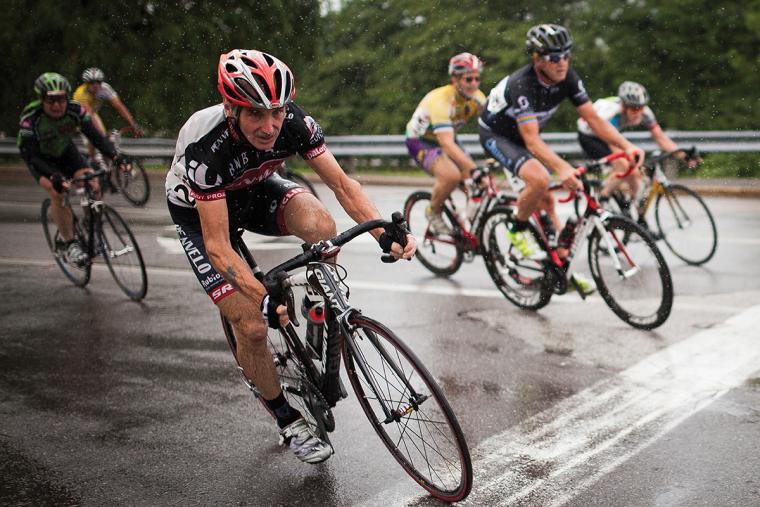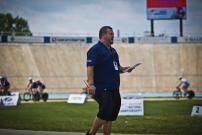

National Championships
USA Cycling hosts 18 championship events each calendar year and actively seeks host cities for those events. Anyone seeking to bid can go to the special page on our website, www.usacycling.org/bids, to investigate.
At the moment, the organization is looking for host cities for the following events:
• 2019 and 2020 USA Cycling Collegiate Mountain Bike National Championship
• 2019 and 2020 USA Cycling Mountain Bike National Championship
• 2019 and 2020 USA Cycling Masters Road National Championship
• 2019 and 2020 USA Cycling Collegiate Road National Championship.
All the information required of potential host cities and venues can be found on that page and since the needs of events can differ, each document will lay out exactly what the organization is looking for.
We are sometimes asked whether a city needs to have a strong cycling club in order to host. Not necessarily – but when we’re evaluating a city to host, we do like to know what its cycling scene in that city is like as a whole. That can tell us whether we’ll be able to more easily find volunteers, spectators and of course, athletes who won’t have to travel as far in order to compete in the event. Some examples of cities with a strong cycling community include Madison, Wisconsin; Salt Lake City, Utah; and Hagerstown, Maryland.
Another question that comes up occasionally is whether our needs change when we’re selecting locations for our Amateur Road events (these would be the events for youth cyclists). They do, in fact; we need at least one course for the event that is completely closed off to traffic. All these factors, as well as plenty of others, play into our decision-making when it comes to site selection.
Demographics
The demographics of cycling, at least here in the U.S., trend older than some of the other sports. Although we work at growing our youth athlete population, most of our membership base is 35 and older, which means athletes often compete at what is called the Masters level.
In terms of the male/female split, we’ve seen our membership retain the same distribution for the past five or so years: about 74 percent male and 26 percent female. We’re not really sure why that has been the trend; it has stayed very steady, though. USA Cycling is working on rolling out some new initiatives designed to bring more women into the sport; our hope is that we see an increase in the long-term.

While USA Cycling does cover all disciplines of cycling, we’re actually seeing the most growth and popularity among events such as gran fondos, which are large group rides with a non-competitive focus. Gravel grinders, large touring rides, fund raising rides and more are all variations on this theme, and without a doubt, they are the most popular segment of the cycling market in the U.S.
USA Cycling doesn’t count these types of rides as one of its disciplines and therefore it doesn’t track participation numbers, but we can see from the anecdotal evidence – social media and traditional media coverage, for example – that they’re growing. There are several reasons for this. These types of events are family-friendly; anyone can ride and can usually find someone else who is going at their speed. They’re very social, and people tend to be friendly with one another during these events which makes them enjoyable, even for first-time participants. They’re also relatively less expensive than many competitive rides. And ultimately, the non-competitive aspect of them will bring in the recreational cyclists who participate for a variety of reasons: fitness, touring, meeting others and more. Of course, a gran fondo does contain timed segments for those who wish to participate in them, but there is no requirement to do so. That means a mix of friends can all take part and find something they like to do.
Another interesting phenomenon has been fat bike events, which we didn’t have the opportunity to sanction until just recently. We have now been offering our Fat Bike National Championships for three years. Although it has grown every year, we have not seen many individual fat bike events applying for permits. However, we have seen a slight increase in the number of event directors who tell us they will be offering fat bike divisions in the events they already offer.
Welcoming the Casual Cycling Market
USA Cycling, as previously mentioned, doesn’t have divisions for the casual cycling market, but we have stepped up our work to bring those riders on board. We have a special category called a Ride Membership, just for people who don’t necessarily want to compete but who want to be a part of the sport. The ride membership (it’s available in two levels) includes unlimited roadside assistance, event accident insurance, discounts, gear, our magazine – all to help keep casual cyclists interested, engaged and on the road.
 USA Cycling’s Calendar
USA Cycling’s Calendar
USA Cycling’s Calendar, listing nationwide events, is found on the website, under Races & Rides. The calendar includes information on the type of event, whether it’s competitive or non-competitive, the discipline, date, location, whether or not the event has been permitted and more. The top tier of events, obviously, is what gets the most interest. A lot of event owners want to get their race onto that calendar – and particularly onto the top tier – because it brings wider exposure from the cycling community. People sometimes ask us about the difficulty of getting events onto the calendar, but that can depend upon the discipline of the event. Those who are interested in adding an event to the calendar are able to fill out a form online.
Options for Event Owners and Race Directors
USA Cycling offers resources for event owners and race directors, and those are found under the Races & Rides tab on our website. We encourage first-time event owners and race directors or anyone who are new to the event world to investigate those as they include information on permitting and responsibilities, insurance, National Calendar Officials Pay and more. USA Cycling also offers its Race Director Certification and its Continuing Education Program for Race Directors.
The reason we offer these tools is because it’s easy to make mistakes when organizing races. Some of the common problems we see are simply a result of people not being aware of all that is entailed in putting on a race. Two that come to mind immediately are not allowing adequate time for permitting (and not knowing how to work with the local municipalities) and not putting together an event budget. Another big problem we see is people not working with their local community when they’re planning a race. If you’re going to be closing down roads for any length of time, it’s going to have an impact on the people who live and work in the area. You definitely want them to get behind the event, so it’s important to make them a part of the planning process, and to keep them informed of what’s happening.
Looking to the Future
The sport of cycling continues its popularity, and cities continue to want to host it. We are working to develop the competitive cyclists of the future; in fact, our elite pipeline starts around age 15 to 16. If we find someone with promise, we may be able to get them over to Europe for a training camp. It seems that presently, our teenaged cyclists are on a par with those in Europe at that age; however, as they age, the cyclists in Europe and other countries have a very steep learning curve that outpaces that of Americans. This is something we hope to change in the future. SDM

